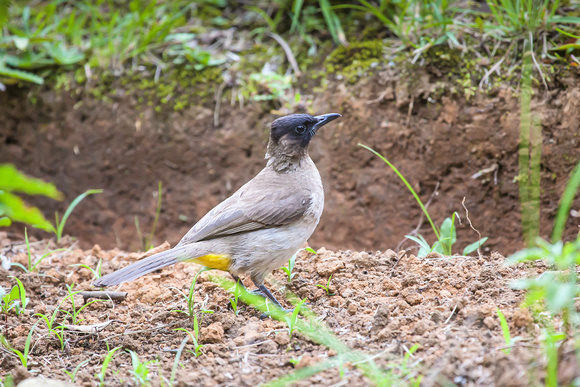Black-eyed Bulbul (Pycnonotus barbatus)
Black-eyed Bulbul (Pycnonotus barbatus)
9 inches long.
It is a common resident breeder in much of Africa. It is found in woodland, coastal bush, forest edges, riverine bush, montane scrub, and in mixed farming habitats. It is also found in exotic thickets, gardens, and parks.
Eats soft fruit, berries and insects.
This species nests throughout the year in the moist tropics, elsewhere it is a more seasonal breeder with a peak in breeding coinciding with the onset of the rainy season. The nest is fairly rigid, thick walled, and cup-shaped. It is made of twiglets lined with hair, roots and fine grass. It is situated inside the leafy foliage of a small tree or shrub, between 6 and 36 feet above the ground.
Two or three eggs is a typical clutch. It, like other bulbuls, is parasitised by the Jacobin cuckoo.
Photographed in Giants Castle Game Reserve, Drakensberg, South Africa.


